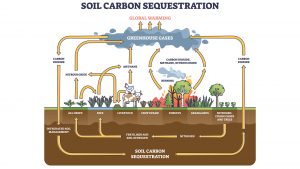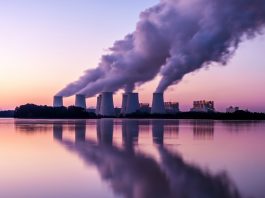Oregon State research has revealed that moisture, not temperature or mineral content, enables soils’ carbon sequestration ability.
Soil-based carbon sequestration is the second-biggest carbon storage process after carbon stored in the ocean. By pinpointing moisture as key to soils’ ability to sequester large amounts of carbon, the researchers aim to improve the understanding of how the global carbon cycle might change as the climate becomes warmer and drier.
The research, ‘Moisture-driven divergence in mineral-associated soil carbon persistence,’ is published in the Proceedings of the National Academy of Sciences.
What is soil-based carbon sequestration and why is it important?
Carbon dioxide in the Earth’s atmosphere can be reduced by either lowering emissions or by taking it out of the atmosphere and storing it. As soils are comprised of broken-down plant matter, they contain carbon that those plants took in from the atmosphere whilst they were alive.
Soil-based carbon sequestration accounts for around 2,500 gigatons of stored carbon, which is approximately three times as much as in the Earth’s atmosphere and quadruple the amount in every living thing on Earth combined.
“Carbon in soil has many functions,” said Jeff Hatten, a researcher at the OSU College of Forestry and co-author of the study. “It’s a major component of soil organic matter that is important to water and nutrient accessibility for plants, and it’s an energy supply to diverse populations of soil organisms. Climate change may impact soil carbon and threaten these important ecosystem services, as well as soils’ ability to keep carbon out of the atmosphere and mitigate climate change.”
Factors affecting soil-based carbon sequestration
According to the researchers, earlier studies had suggested that soil carbon in wet ecosystems was most vulnerable to temperature shifts, and changes in moisture were only considered to threaten soils’ ability to sequester carbon in dry ecosystems.

“The big takeaway from the new study is that most of the things we thought we knew about soil carbon were wrong,” said Kate Heckman of the U.S. Forest Service, who led the research.
“Our initial hypothesis centred on the importance of certain kinds of soil minerals that we assumed were important in carbon persistence, or how long carbon stays in soil. We also thought that temperature patterns across the sites would be a strong regulator of carbon age, but we didn’t see the signals we expected to see associated with either temperature or soil mineralogy.”
The researchers analysed samples to understand how the ecosystem is changing
The Oregon State team and collaborators from Virginia Tech, Michigan Tech, the University of Colorado, and the Pacific Northwest National Laboratory looked at 400 soil core samples from 34 sites. The cores provide an understanding of thousands of layers of soil, which show different characteristics based on age and composition.
“Opening the cores was like seeing different parts of the country through an eight-by-200-millimetre soil snapshot,” said Adrian Gallo, who performed many of the initial core analyses as a doctoral student under Hatten. “It was not uncommon to open up the cores and think, ‘What on Earth is happening here with the colours and rocks and roots?’ And then I’d have to look at aerial imagery, topography maps, and soil descriptors from nearby locations to help me understand the landscape history.”
“Our results show that when predicting the response of soil carbon to climate change, particularly at a site in a dry ecosystem, we need to consider the history of climate and soil on that site,” Hatten added.
Radiocarbon and molecular composition analyses on the core samples were performed by the researchers to highlight the relationship between the abundance and persistence of carbon sequestered in the soil and the availability of moisture.
The scientists divided the core sample sites into being from areas that could be broadly described as either having a humid or arid climate. The division is associated with differences in organic carbon decomposition rates from site to site.
“Soil organic carbon is being considered as one of the more promising carbon sequestration approaches we have, and understanding the role moisture plays in that process is critical to helping us realise that potential,” Heckman said.
“My hope is that this study encourages a lot of our science community to examine the role of moisture in the terrestrial carbon cycle.”









